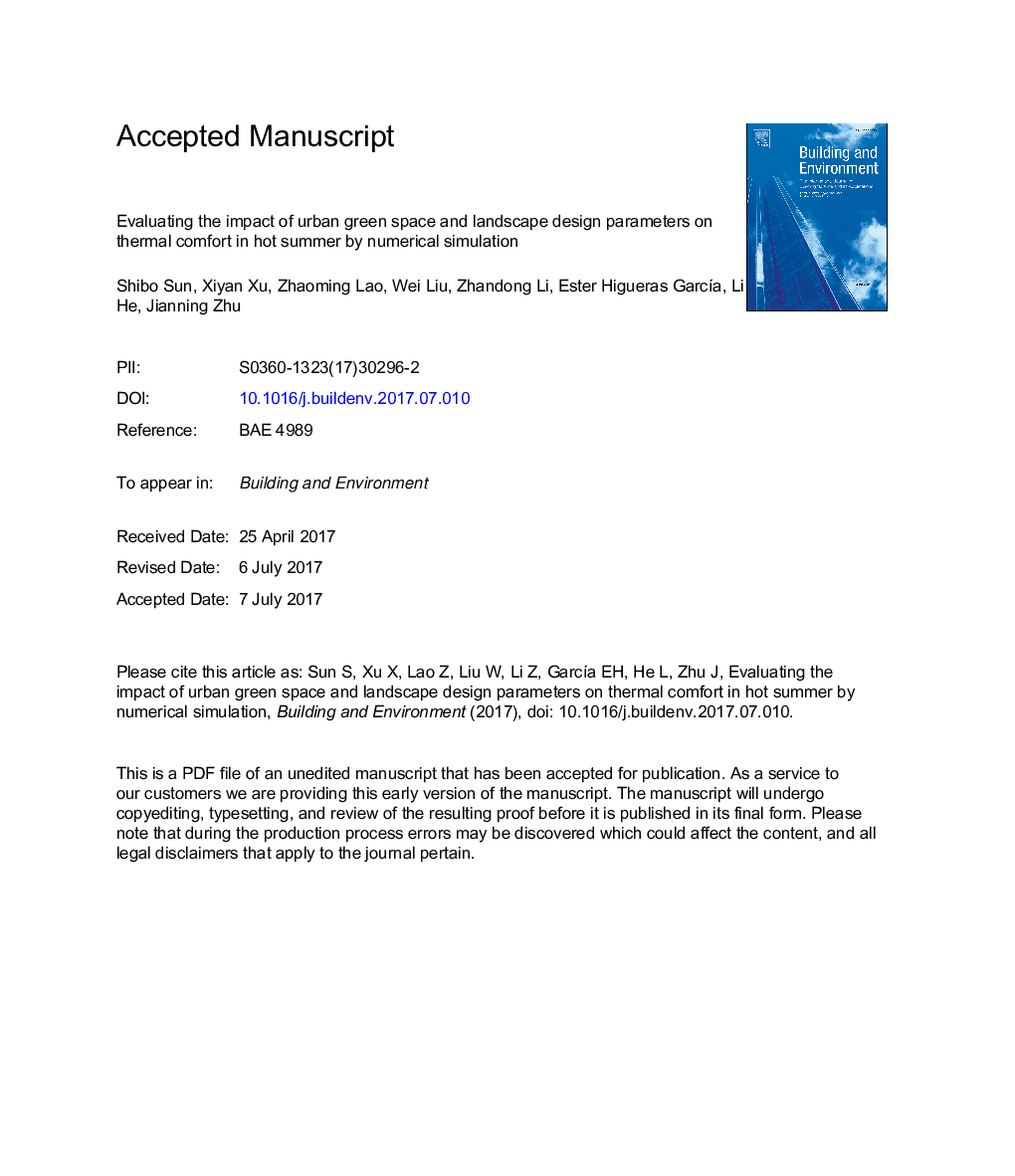| Article ID | Journal | Published Year | Pages | File Type |
|---|---|---|---|---|
| 4917261 | Building and Environment | 2017 | 44 Pages |
Abstract
Urban green spaces (UGS) can help to moderate the urban heat island effect and thus thermal comfort through the impact of landscape design parameters with regard to the land cover features. The current work investigates the thermal comfort modification potential of a long belt-shaped park (around 9 km) in Beijing and the effects of its landscape parameters using numerical simulation. Holistic spatial and temporal distribution scenarios of thermal comfort of the park are obtained in terms of physiological equivalent temperature (PET). The UGS covered regions generally exhibit better thermal comfort level, but deteriorating phenomenon is also found at some uncovered sites in the park due to the solar-radiation and enhanced reflection effect. At 14:00 h, the mean reduced PET (â³PETm) by UGS are around 2 °C with the maximum and minimum value being 15.6 °C and â8.4 °C, respectively. Regression analyses show that the most significant influential factor on the moderation of thermal comfort is the higher trees, while the hardened ground exhibits a negative effect. The outcome of the current work provides detailed knowledge on the benefits of UGS and gives suggestions for urban landscape planners and policy makers to improve urban thermal comfort.
Related Topics
Physical Sciences and Engineering
Energy
Renewable Energy, Sustainability and the Environment
Authors
Shibo Sun, Xiyan Xu, Zhaoming Lao, Wei Liu, Zhandong Li, Ester Higueras GarcÃa, Li He, Jianning Zhu,
